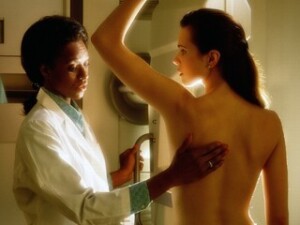by
Brendon Nafziger, DOTmed News Associate Editor | December 09, 2011
A screening mammography program could have lowered women's quality of life for the first years it was set up, and afterward its benefits were more modest than previously thought, according to a new study that was quickly criticized by a major radiology group for relying on "discredited" and "obsolete" data.
The study is merely the latest in a slew of conflicting reports examining the harms and hopes of mammography, an issue that has come to the forefront in women's imaging since a controversial 2009 recommendation by the U.S. Preventive Services Task Force called for raising the age at which women begin screening.
The current study, published Friday in the British Medical Journal, used a so-called life-table model to weigh life-years gained by screening against the known ills from the program, such as the costs of overtreatment and anxiety around false positives. False positives are when a mammogram wrongly indicates the woman has cancer, and overtreatment involves treating cancers (such as by surgery) that never would have caused the woman a problem.



Ad Statistics
Times Displayed: 174790
Times Visited: 3187 For those who need to move fast and expand clinical capabilities -- and would love new equipment -- the uCT 550 Advance offers a new fully configured 80-slice CT in up to 2 weeks with routine maintenance and parts and Software Upgrades for Life™ included.
"This analysis supports the claim that the introduction of breast cancer screening might have caused net harm for up to 10 years after the start of screening," said the authors, James Raftery, a health technology professor, and Maria Chorozoglou, a research fellow, both with the University of Southampton.
Updating the Forrest report
The study incorporates the findings of a recent Cochrane Review, and functions as an update of sorts on the landmark "Forrest report" from the 1980s, which ushered in kingdom-wide breast screening in the United Kingdom.
The recent Cochrane Review concluded that screening was linked with a 15 percent decline in mortality, but not without cost. It suggested for every 2,000 women invited for screening over a decade, one woman's life will be saved, while 10 healthy women will undergo treatment for breast cancer needlessly, and 200 women will suffer some months of anxiety over a false positive finding.
In the current study, the researchers created a model informed by those and other estimates. Using that model, the researchers found that after 20 years, mammography did have a significant benefit, even after taking harms into account. To do this, they calculated the "quality-adjusted life-years" gained by screening. QALYs are a sometimes controversial method used to determine extra years of survival gained adjusted by how healthy those years are.
In the study, the researchers said, cumulatively, 1,536 QALYs were gained by screening. However, that was less than half of the earlier estimated 3,301 QALYs of the original Forrest report, which did not account for overtreatment and misdiagnosis harms.

